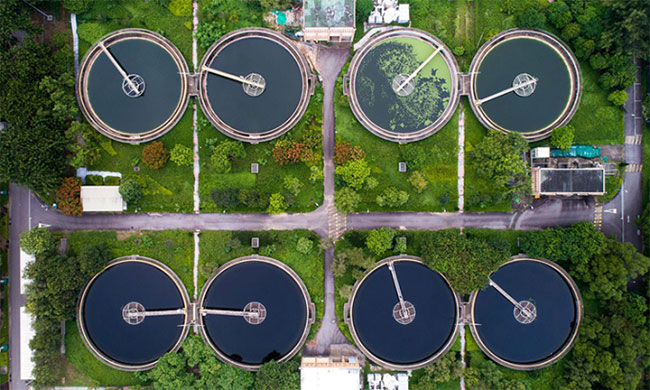The recycling process turns wastewater into a 'treasure'
Researchers at Stanford University are developing an anaerobic wastewater treatment process to create clean water and a valuable resource.
In a world where one in four people do not have access to clean water, many of whom live in poverty, scientists are constantly looking for new ways to replenish supplies. water for mankind.
A mechanism called anaerobic filtration has received much attention because it uses very little energy to convert wastewater into a consumable form, but there is a problem: while purifying water, the filtration process Anaerobic anaerobes tend to produce dangerous by-products associated with sulfide (an inorganic ion of sulfur). These are substances that are extremely harmful to human health and the environment.
According to the Centers for Disease Control and Prevention (CDC), inhaling hydrogen sulfide can lead to symptoms such as difficulty breathing, tremors, eye and skin irritation, loss of consciousness, and even death at high concentrations. . That means workers at wastewater treatment plants face many health risks.

Anaerobic wastewater treatment requires little energy but often produces dangerous byproducts.
To address this urgent situation, in a paper published March 2 in the journal ES&T Engineering, researchers from Stanford University in the US have revealed a new anaerobic process, not only turn toxic sulfides in wastewater into safe compounds, but also create highly valuable resources for technological and agricultural production.
Usually, scientists try to solve the sulfide problem by using certain chemicals to separate sulfur derivatives into non-toxic components. However, that often corrodes the pipes of the filtration system, reducing the overall efficiency of clean water generation.
In the new method, the team treats sulfides using a technique known as electrochemical sulfur oxidation. "The process we're working on is converting the sulfides in the wastewater into something more valuable, like sulfuric acid, for example, which can be used in a variety of manufacturing processes or as fertilizers," said lead author. Xiaohan Shao, a doctoral student in civil and environmental engineering at Stanford University.
Essentially, this electrochemical system gives researchers the option to convert sulfides into other sulfur derivatives, thereby completely removing hazardous chemicals from anaerobic filtration. According to the team, the process requires very little energy and can be run entirely on renewable sources, allowing it to be applied to entire cities.
"We can integrate our process into other advanced wastewater technologies to bridge the gap between wastewater and drinking water," added Shao. "It is hoped that this research will help accelerate the adoption of technology that reduces pollution, restores precious resources and creates drinking water at the same time."
- Lack of clean water, humans may have to drink toilet water in the future
- 'Terrible' machine turns waste into the first floor tile in the world
- 10 biggest treasures of all time
- Inauguration of a centralized wastewater treatment plant
- A company has found a way to turn waste plastic into bricks to build houses and protect the environment
- Search for the most mysterious treasures of all time
- Green machine: Recycling robot
- Technology to recycle blood for her birth
- Unique 'technology' hospital wastewater treatment with reeds
- Canadian companies claim to recycle 100% of Li-ion batteries, not to waste any materials
- How has Singapore turned waste water and sea water into drinking water?
- How has Singapore used technology to turn wastewater into drinking water?
 'Barefoot engineer' invents a pipeless pump
'Barefoot engineer' invents a pipeless pump Process of handling dead pigs due to disease
Process of handling dead pigs due to disease Radiometer
Radiometer Warp Engine: Technology brings us closer to the speed of light
Warp Engine: Technology brings us closer to the speed of light